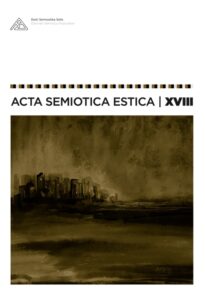Budismi semiootika II. Mõistetest
Semiotics of Buddhism II – On Concepts
Author(s): Andres HerkelSubject(s): Semiotics / Semiology, Semiology, Indian Philosophy
Published by: Eesti Semiootika Selts
Keywords: semiotics of Buddhism; sign (nimitta and lakṣaṇa); signifier and signified (nāmarūpa); conceptual proliferation (prapañca); dharma; self and non-self (ātman; anātman); transformation; two truths;
Summary/Abstract: In the previous article (Herkel 2020a), we looked at the contribution of buddhologists in Tartu-Moscow School of semiotics, with emphasis on the works of Aleksandr Pjatigorski and Linnart Mäll. This time we will approach the semiotics of buddhism from a different angle, reviewing some of its basic concepts and their possible equivalents in contemporary semiotics, as well as their necessity for semiotic thinking. The main source used for generating examples and comparisons here is the Nāgārdžuna (ca. 150–250) Mūlamadhyamakakārikā (Root Verses on the Middle Way). Buddhism’s basic concepts and their western counterparts are: (1) Nimitta and lakṣaṇa as major analogies for the term sign; (2) nāmarūpa which is compared to the signified and signifier; (3) prapañca, vikalpa and other sanskrit terms characterizing conceptualization and embedding in concepts; (4) dharma as central concept with many possible translations: teaching, text, universal law, characteristic, psychological element etc.; (5) ) ātman and anātman as basic concepts of selfhood with detailed analysis of its elements and salvation from boundaries of self; 6) the two levels of truth: samvṛti-satya as conventional truth and paramārtha-satya as a higher level of truth; (7) śūnya and śūnyatā, respectively zero and emptiness as a manifestation of the limits of thought.
Journal: Acta Semiotica Estica
- Issue Year: 2021
- Issue No: 18
- Page Range: 10-32
- Page Count: 23
- Language: Estonian

